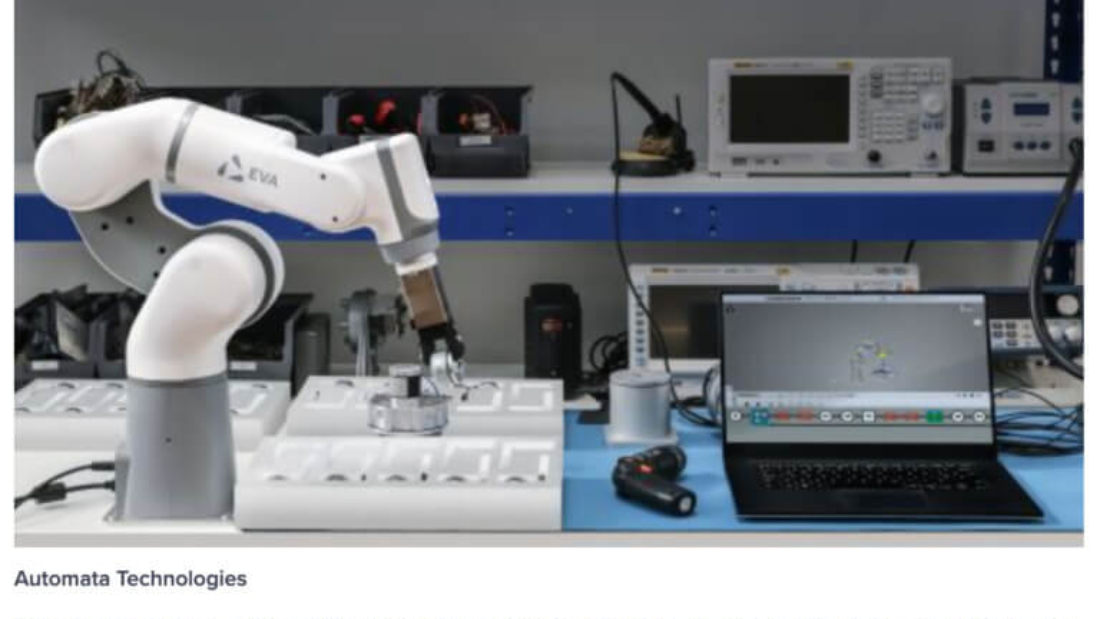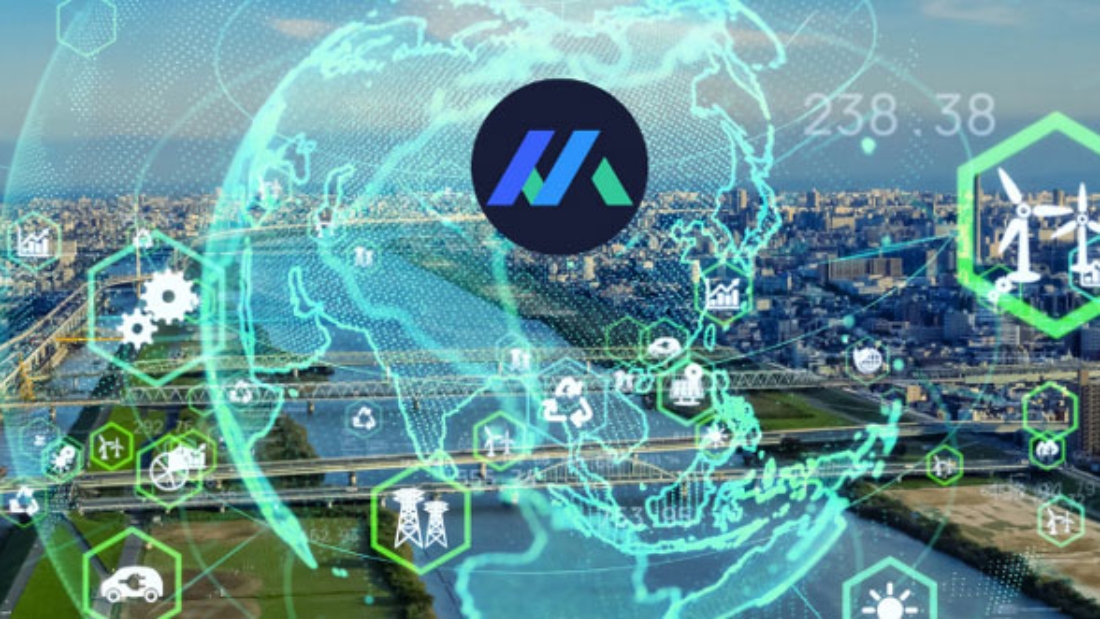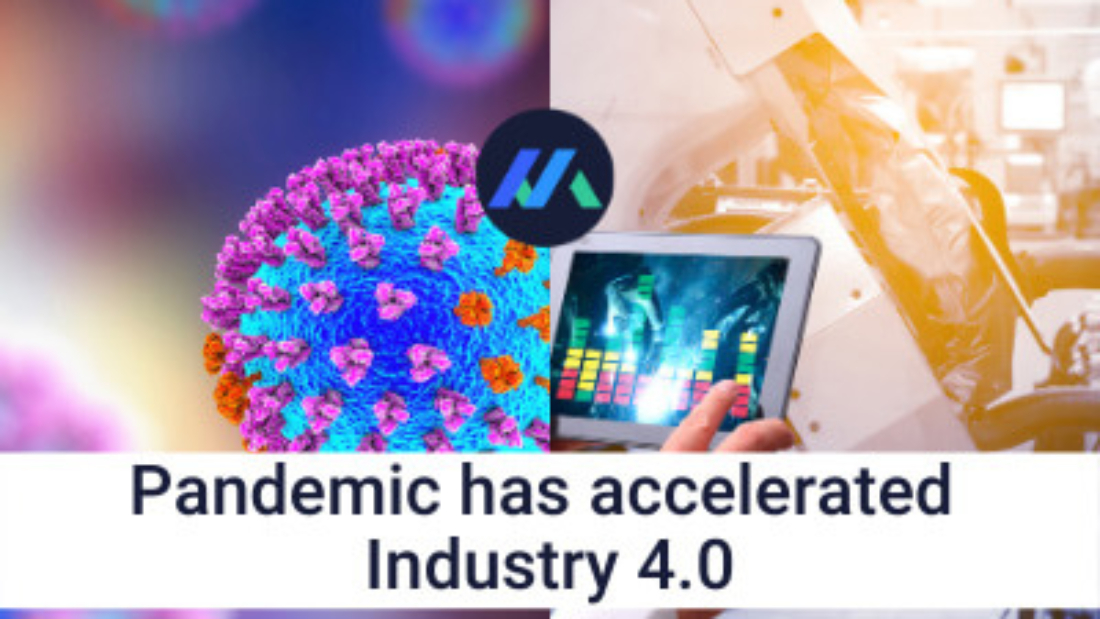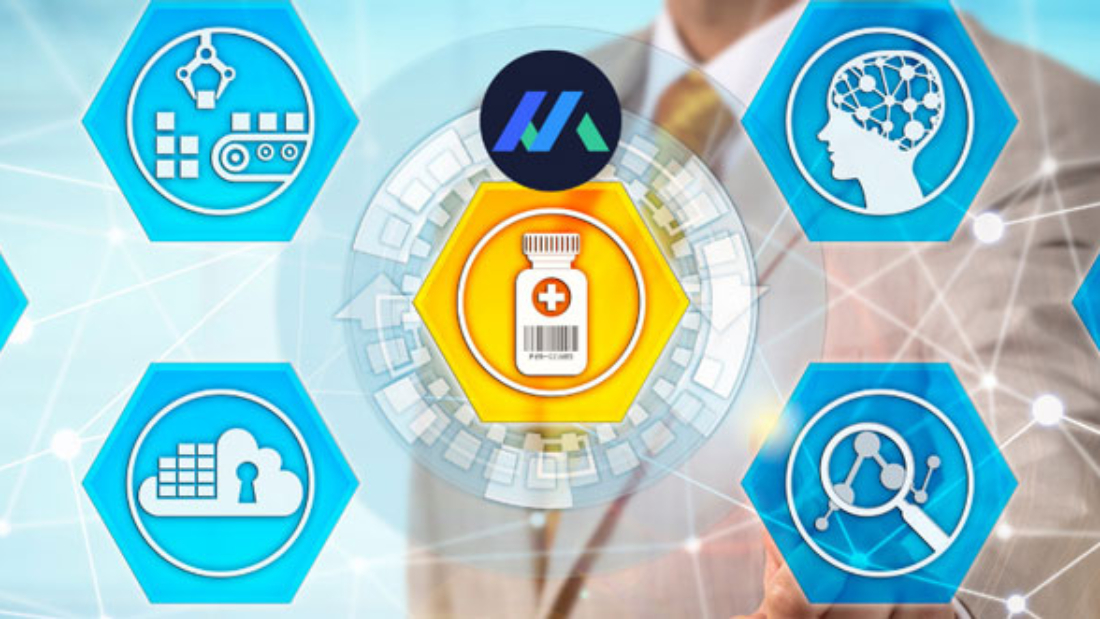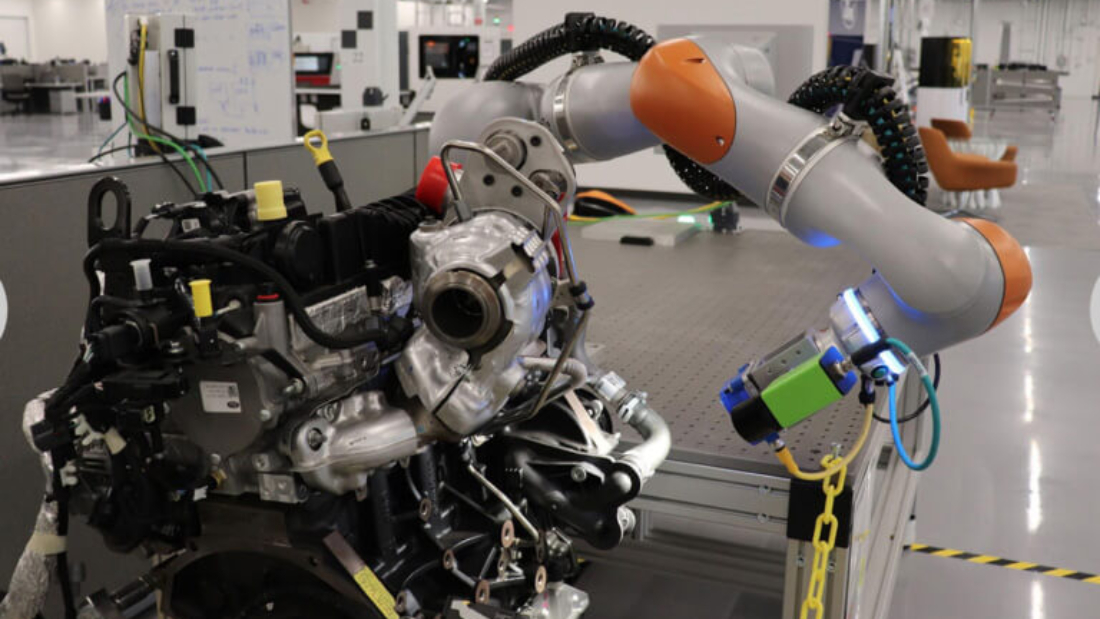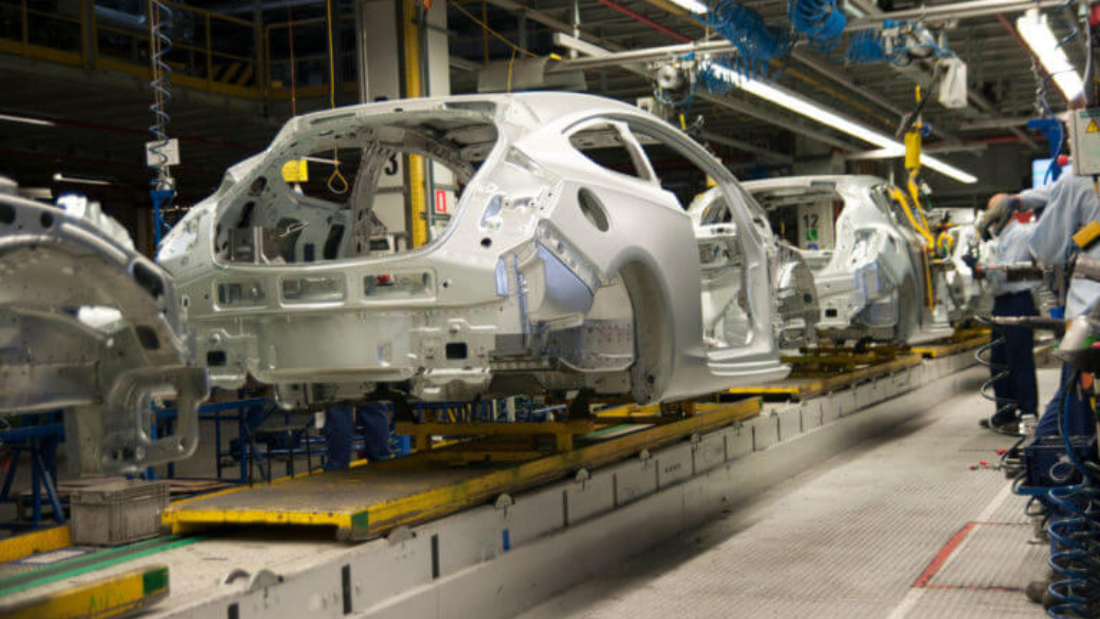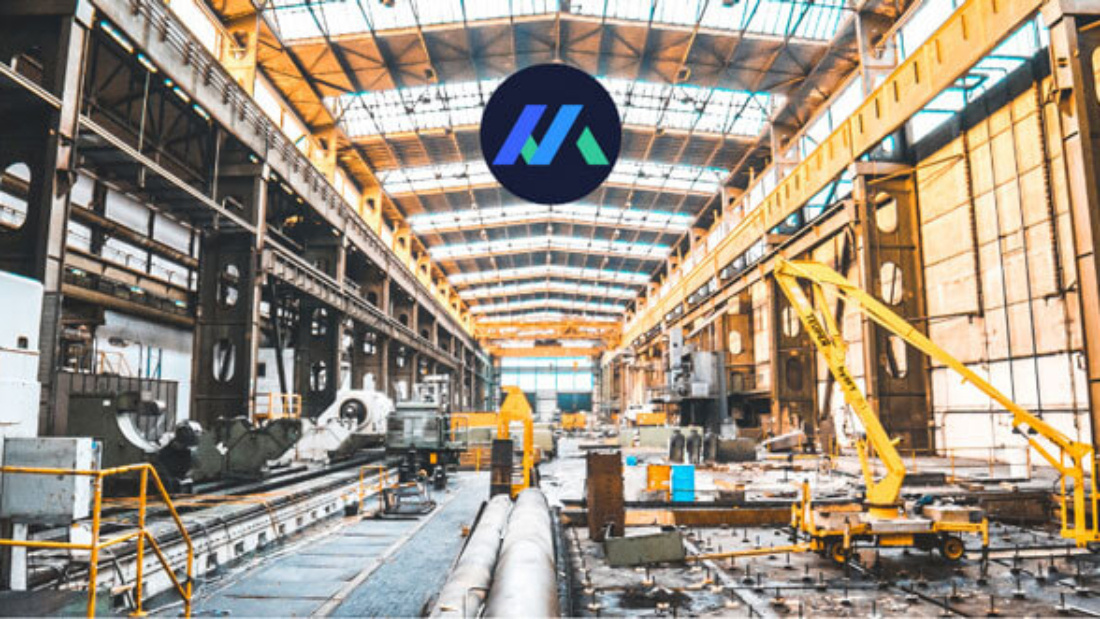Makoro™ monitors assets and proactively provides maintenance recommendations. Such prediction reduces unplanned downtime and time taken to repair. This in turn reduces lost revenue and improves productivity.
Eva – A significantly affordable step in industrial robotics
Automata raises $7.4M on the power of Eva – a $6,600 Industrial Robot that can perform simple tasks relieving human minds to focus on the more complex ones.
The Future Factory: Developing Sustainable Industries
The epidemic altered our daily life and the world we live in irreversibly. Each of us now has a unique perspective on our surroundings, as our susceptibility to natural disasters becomes more palpable.
While population expansion, urbanization, and globalization aided in the virus’ spread, they also boosted CO2 emissions and had other detrimental environmental consequences. Despite the need to concentrate on immediate issues, we must forget about those that will face us in the future. Climate change is the single greatest problem of the modern era, with about two-thirds of the world’s population now perceiving it as a worldwide emergency. We just cannot ignore it any longer.
]Indeed, we are the generation most equipped to resolve it. In fact, we may be the last generation capable of altering the course of history and taking the necessary actions to address climate change. It is our responsibility to utilize our knowledge and the resources at our disposal to help us win the battle for climatic stability. These tools comprise emerging technologies that have the potential to increase resilience.
Digital Technology and Green Electricity are the two keys to resolving this conundrum.
Digital technology is the most visible breakthrough in reshaping humankind. Consider how digital technology has transformed the way we work and live together. The Internet’s first episode was all about connecting people. The next episode will focus on reimagining how we live and interact with our surroundings. It’s going to be about machine-to-machine communication and human-to-machine communication. This is made feasible by the combination of the Internet of Things (IoT), which connects everything in our environment, and Big Data, which is the process of gathering, aggregating, and analyzing enormous volumes of data in data centers to provide actionable intelligence. And the capability for training machines and developing algorithms to make sense of all this data is essentially limitless now. The adoption of smart manufacturing technologies is already paving the way for a more desired future, in more effectively sharing and conserving the resources we use.
The second technology, which is arguably less apparent than the first since it has existed for a long period of time, is green power. Consider solar energy, microgrids, net-zero-energy structures, and electric automobiles. Because electricity is the only method to decarbonize energy, prepare for a far more electrified future. However, the electricity will not be the same in the future. Renewable energy will be used. Green is the way of the future.
The equation has four straightforward variables:
- Digital. Thanks to digitization, we can be considerably more efficient in every area. By using digital technology, whether in smart buildings, smart manufacturing, or smart cities around the world, we may achieve significant increases in efficiency over current levels.
- Circular. This is about ensuring that everything we do contributes to the development of a more circular economy than the one we now have.
- Electric. The percentage of electricity in everything will double in the next few years. We talk a lot about electricity, although it accounts for just around 20% of the energy we utilise today. It will double to 40% in 20 years.b
- Renewable. Today, just 6% of power is renewable. By 2040, it is expectedl be 40% renewable.
And it is not a case of waiting for one of these factors to change before shifting emphasis to another. We must work on all of them concurrently. We cannot afford to wait, since what we construct now will remain for years to come. If we want to combat climate change, we must immediately start taking actions.
Sustainability fosters adaptability.
Pandemics like the recent one and climate change are the two greatest risks to our society’s future. It is critical that we take action and build a sustainable world that prioritises resilience. Maintaining the present momentum is critical for attaining the really sustainable and resilient future that the whole planet so desperately needs.
COVID-19 may have shifted our emphasis, but it has emphasised the need for adaptability and agility. With the economy put under strain, it has acted as a wake-up call for increased awareness of long-term sustainability. Businesses must recognise that they can do better and must emphasise sustainability across their operations.
A more sustainable organization starts with your assets.
Considering that each asset has a finite life cycle and will eventually need to be replaced, a sustainable approach is to extend its life. Makoro™ helps extend the asset life through increased operational efficiencies. Sensors monitor assets, and Makoro™ continuously combines real-time asset health data with data from operations and enterprise systems to make accurate and relevant recommendations that optimise their operations more effectively. For example, as you reduce the number of routine maintenance trips, you save the engineer’s time and energy costs; at the same time you save on parts consumption through accurate and timely parts optimization; and improve overall process efficiency, thereby producing higher quality products with less rejection.
Multiply those efficiencies across your enterprise and the sustainability gains become extremely significant.
Research shows that proactive asset recommendations result in a 11%-13% reduction in raw material consumption and potentially saves up to 15%-18% on energy expenses.
Pandemic has accelerated Industry 4.0
Manufacturers are looking to digitize their activities to meet the demands of the pandemic. The aim is to create a single operating mechanism that spans all available resources on a global scale.
This necessitates consistent structures and standardization, which must be facilitated by emerging technology, agile processes, and data access. It is essential to provide global insights into plant performance combined with business background from enterprise systems.
The greater the amount and the variety of data that learning systems can ingest, the more accurate they become. Digital processes and the capacity to process vast amounts of data are essential components of digital transformation.
A key element of adoption for digital transformation initiatives is value demonstration.
A large percentage of pilots rot in the “Pilot Purgatory” because they do not demonstrate a clear business value. Makoro™’s dashboard provides a continuous value demonstration of recommendations on specific business outcomes related to assets, maintenance, and workforce. These are quantified values that also act as incentives to continuous asset and process improvement.
Another impediment is workforce adoption.
Deployment of new tools often is too technology-focused. It does not put business capabilities in the hands of the existing operations workforce, the real catalysts who leverage their domain and process knowledge to derive value from these tools. Makoro™ is created for the operations workforce – for operators, maintenance engineers, floor managers, and operations executives. Makoro™ gives recommendations that are seamlessly integrated into their regular task workflows, making them easy to adopt.
We internally say that “Makoro™ solves the issues on the production line that keeps operators up at 8 o’clock on a Friday evening.” Do you really want to call the data scientists at that time to interpret data and drive decision-making? That’s where the natural language recommendations really make their mark.
A third barrier is the high cost of a scalable solution.
It is one thing to experiment with analytics – ingest data from a few machines, run experimental algorithms, and derive value (which is also a necessary step in the lifecycle) but building a scalable solution that works for thousands of assets and hundreds of devices per asset, and supports hundreds of workers across multiple locations needs well-thought-out vision, risk mitigation strategies, and investment plans. Makoro™’s Automated Operations and Continuous Intelligence scales up and down in a frictionless manner across devices, edges, and hybrid clouds to deliver the scalability that businesses need.
We should aim higher, but implementations must start smaller in scale, with an eye on delivering maximum impact. The rollout should be line-by-line and site-by-site, which mitigates risk and delivers value at each stage.
Want to know how Makoro™ can drive adoption, scale, and value in your business? Sign up for a demo.
Pharma 4.0 – Road to the Smart factory
Smart factory development is a top priority for manufacturers across all industries and sectors. It is a component of a business’s digital transformation, and it is critical to maintaining competitiveness while also meeting the demands of consumers and end-users, as well as B2B customers and regulators.
This is all part of Industry 4.0, the umbrella term for the revolution currently sweeping the manufacturing sector.
As with previous industrial revolutions, Industry 4.0 will evolve over many years and decades as new technologies and processes are developed, and as businesses, regulators, and consumers grow.
>What are the critical smart factory developments worth examining today if you work in the pharmaceutical or medical technology industries?
Why is Industry 4.0 even more critical to the pharmaceutical manufacturing industry?
- Increased Productivity — Automating processes enables them to be completed more quickly and accurately. Reduce downtime through automation and the use of sensors and predictive systems that enable equipment to function autonomously.
- Improving the supply chain’s efficiency through integration – They are making it feasible to transition from batch to continuous manufacturing, a production approach that results in much less downtime and increased efficiency.
- Increased Quality – Increased automation and continual monitoring of your manufacturing plant will result in fewer mistakes and higher-quality final products.
- Risk Reduction – This follows naturally from the preceding two arguments – increased manufacturing precision reduces the danger of substandard items reaching end customers.
- Facilitates Regulatory Compliance – Compliance with existing and upcoming laws in the E.U. and other parts of the globe is made more accessible via the use of Industry 4.0 technology. To comply with the Falsified Medicines Directive, new track and trace systems and serialization solutions are presently being deployed.
- Improved Business Oversight – Industry 4.0 technologies enable real-time reporting, increased data collection, improved data analysis, and improved data presentation in usable formats.
- Development Of New Business Prospects – Industry 4.0 will also open up new commercial prospects for pharmaceutical businesses. For instance, Industry 4.0 technologies enable seamless and highly efficient end-to-end supply chain integration. This increases productivity, which helps your business immediately. A more connected and efficient supply chain, on the other hand, is also more scalable, opening up new potential for your organization. Covid-19, a quick-win situation.
- Increased Profitability – When all of the aforementioned are combined, the outcome is improved corporate profitability. Additionally, your firm will be more competitive and better able to address future difficulties and opportunities. Covid-19 has accelerated the advancement of biotechnology problems.
The pharmaceutical industry has only recently begun to adopt Industry 4.0 technologies, despite the fact that it has been using batch manufacturing for more than 50 years. However, the traditional batch process technique has been demonstrated to be lengthy: after each stage in the process, production is generally halted to allow for quality assurance testing of the material. Each break lengthens the lead time and increases the likelihood of defects and errors (FDA, 2016).
This encouragement comes at a critical time – we are entering an era of precision (personalized) medicine, “where medicines must be produced with unique characteristics and made available to people in need more rapidly.” (U.S. Food and Drug Administration, 2016).
To create customized medications, pharmaceutical companies no longer need to produce large batches but rather tiny ones tailored to a limited group of individuals who require a certain treatment in a specific dosage. Batch production is not the answer to these demands, but continuous manufacturing that is connected, smart, adaptable, and accurate.
Continuous manufacturing is used in the pharmaceutical business to move substances nonstop inside the same facility, eliminating wait times between process steps; the materials are fed via an assembly line of integrated components. Manufacturing that is continuous “saves time, decreases the risk of human mistakes, and enables a more agile response to market changes. It can operate for an extended length of time, potentially reducing the probability of medication shortages.” (U.S. Food and Drug Administration, 2017).
Pharma Opportunities 4.0
- Gains in economic terms, such as greater revenues as a result of reduced transaction costs
- Increased reliability and consistency in production and output, as well as higher-quality products
- Energy-efficient and ecologically friendly manufacturing systems
- Utilization of human and material resources effectively.
- Changes in work structure, with a greater emphasis on remote, flexible, and on-demand labor
Pharma 4.0’s Obstacles
- Gaps in infrastructure
- Policies and regulations that are out of date and do not take into account 4.0 Industry
- Ownership and security of data
- Transparency, confidentiality, and ethics
- Changes in the fundamental characteristics of innovation processes and their implications for competition and entry barriers
Take away points
We may now re-evaluate our industry’s accomplishments while simultaneously re-strategizing our future strategy toward offering high-quality therapy at scale and bringing fresh hope to humanity.
By strategically integrating the production process, we as an industry will be able to stay ahead of the problems and expectations on which the rest of the world is so reliant.
Predictive analytics enables you to foresee issues, minimize risks, capitalize on opportunities, and ensure that resources are directed appropriately.
Predictive analytics is already being used by pharmaceutical and medical device makers in the field of equipment maintenance. It is possible to forecast the effect of a variable on a piece of equipment, a production line, or a process using technology such as digital twins.
About Makoro™:
Makoro™ leverages #AppliedArtificialIntelligence and #NaturalLanguageRecommendations powered by #DigitalTwin in solving transformative problems in the manufacturing supply chain.
If you are still leading with reports and dashboards, you are falling behind. You are leaving money at the table. When you can shave off minutes and hours you spend making the right decisions on your assets.
Asset performance recommendations from Makoro™ deliver improved asset and process performance consistently through recommendations. These recommendations are backed by data and can be traced to the sources of data.
Makoro™ recommendations deliver direct operations savings and indirect compliance savings.
The Renewable Energy Revolution: Paving the Way to a Sustainable Future
In recent years, the world has witnessed an unprecedented shift towards renewable energy sources, marking the beginning of a global energy revolution. Driven by growing concerns over climate change, depleting fossil fuel reserves, and the need for energy independence, countries across the globe have embraced renewable energy as a viable and sustainable solution. This article explores the renewable energy revolution, highlighting its significance, key advancements, and the potential it holds for a greener and more prosperous future.
The Need for Change
The traditional energy sector, predominantly reliant on fossil fuels, has long been associated with numerous environmental and socio-economic challenges. Climate change, resulting from the excessive emission of greenhouse gases, poses an existential threat to our planet. Furthermore, fossil fuel dependency exposes countries to price volatility, geopolitical tensions, and limited energy access. To combat these issues, a transition towards renewable energy sources has become imperative.
The Rise of Renewable Energy
Renewable energy, derived from naturally replenished sources such as sunlight, wind, water, and geothermal heat, has gained significant traction in recent years. Advancements in technology, coupled with supportive policies and declining costs, have accelerated the adoption of renewable energy on a global scale.
- Solar Power: Solar photovoltaic (PV) panels have become increasingly affordable and efficient, enabling widespread solar power installations. With abundant sunlight, regions such as California, China, and India have experienced remarkable growth in solar energy production.
- Wind Power: Wind turbines, capable of harnessing the kinetic energy of wind, have emerged as another major renewable energy source. Countries like Denmark, Germany, and the United States have made substantial investments in wind power infrastructure, contributing to a significant portion of their energy needs.
- Hydropower: Hydropower, generated by the force of flowing or falling water, has been utilized for centuries. Large-scale hydroelectric projects, such as the Three Gorges Dam in China, have demonstrated the immense potential of hydropower to meet substantial electricity demands.
- Nuclear Power- Nuclear power is a form of energy generation that harnesses the heat produced by nuclear reactions to generate electricity. It offers a reliable and efficient source of power, with a high energy output and minimal greenhouse gas emissions, making it a popular choice for many countries around the world.
- Other Renewable Sources: Biomass, geothermal energy, and ocean energy (tidal and wave power) are also being explored as viable alternatives to fossil fuels. These sources, though relatively nascent, show promise in diversifying the renewable energy mix.
Benefits of the Renewable Energy Revolution
The renewable energy revolution offers a multitude of benefits:
- Environmental Impact: Renewable energy sources produce minimal greenhouse gas emissions, thus mitigating climate change and reducing air pollution. This transition is critical for preserving ecosystems, combating deforestation, and protecting human health.
- Energy Independence: Relying on renewable energy reduces dependency on fossil fuel imports, enhancing energy security and reducing geopolitical tensions associated with resource scarcity.
- Economic Opportunities: The renewable energy sector has emerged as a significant driver of economic growth, fostering job creation, technological innovation, and attracting investments. It offers opportunities for small-scale distributed energy systems and promotes community-level resilience.
- Decentralization and Resilience: Renewable energy enables the decentralization of power generation, reducing vulnerability to grid failures and enhancing resilience during natural disasters.
Schedule a call to talk more about your needs and how we can help. 15 minutes is all it takes.
Stay tuned for the upcoming in-depth article on the solar wafer manufacturing.
Ford demonstrates advanced manufacturing
#smartmanufacturing: right here, right now – don’t miss the slideshow on Ford’s new Advanced Manufacturing Center.
We are building Porsches here
Do you get this question often – “How frequently will our customers use the analytics tool?”
Absolut use cases of ML in Supply Chain Management
Artisan products can be key differentiators for their manufacturers and as we at #codedataio see more manufacturers going the artisan route, it becomes all the more important to use automation in decision support in order to squeeze out more with less
Lighthouse factories – Origin, Progress, best practices and road ahead
What are Lighthouses?
During The World Economic Forum’s 13th Annual Meeting, added ten new factories to the Lighthouse Network, a WEF initiative launched in 2018 in collaboration with McKinsey to identify and highlight manufacturers at the forefront of implementing technologies enabling the Fourth Industrial Revolution. The term “lighthouse” refers to the fact that these factories can serve as beacons for the many thousands of others worldwide that are still attempting to implement technologies such as artificial intelligence, additive manufacturing, and advanced analytics, as well as overcome challenges associated with upgrading existing production systems.
There are currently 90 ‘Lighthouses,’ the world’s most sophisticated enterprises that are paving the way for the Fourth Industrial Revolution’s acceptance.
Lighthouse Progress with Industry 4.0
Manufacturing has endured a decade of stagnant productivity and fragmented demand; hence, innovation is long overdue. Where Fourth Industrial Revolution innovations have been scaled beyond the pilot stage, remarkable efficiency gains have occurred with little job displacement.
However, the majority of businesses seem to be trapped in “pilot purgatory.”
These lighthouse factories illustrate how forward-thinking technology engagement may result in a better, cleaner world via increased production efficiency. Similarly, they demonstrate how Fourth Industrial Technology used at scale has the potential to revolutionize the nature of work through upskilling and engaging human employees while minimizing displacement.
Three technology megatrends – connectivity, intelligence, and adaptable automation—are driving a Fourth Industrial Revolution paradigm change in manufacturing:
- Connectivity: establishes connections between isolated network nodes, boosting visibility
- Intelligence: automatically recognises and interprets events for decision-making
- Flexible automation: Incorporates reaction mechanisms, automation, and remote mobility
Adoption of technology at a large scale may have a profound effect on companies. A closer examination of one of these three megatrends demonstrates how potent this influence may be.
Lighthouse Best Practices
-
Scalability is a possibility.
The use of 4IR technologies at a large scale is essential for long-term development. But, what exactly is the key to growing success? The vast majority of businesses are stuck in pilot purgatory, unable to go forward because of antiquated working methods or a lack of innovation.
What strategies have lighthouses used to effectively navigate the Fourth Industrial Revolution? The solution is twofold: agility and the development of the workforce.
First and foremost, these organizations have adopted agile methods of working. As a result, they have been able to deploy 4IR technologies throughout their production networks and value chains quite fast. Because lighthouses have transformed their operations to optimize flexibility and adaptation, they have created an environment that encourages new thinking and dynamic methods. This allows for greater sensitivity to variations in supply, demand, and consumer expectations, among other things.
Second, lighthouses take the advancement of their employees seriously. Workers are more prepared and more productive in a 4IR environment when they get training, reskilling, and upskilling—which includes teaching new skills for future occupations. With a focus on inclusive development, lighthouses ensure that people remain at the core of their 4IR transitions, ensuring that operators have the chance to reach their full potential in order to construct the inventive, creative future at the heart of redesigned industry. Effective employee involvement is critical to effective scaling, and scaling is crucial for 4IR technologies to achieve rapid development and expansion.
2. Agility is Critical
The agile technique is seeing a rebirth in manufacturing. This is particularly true for lighthouses. While agile may be applied in a number of ways, the lighthouses’ view of agile is characterized by a focus on cross-functional cooperation and rapid, continuous iteration. The agile approach was implemented across that impacted various dimensions
Systems for managing business processes
- Individual systems
- Internet of Things/Data Systems
Each lighthouse incorporates at least twenty digital technology use cases. Each of these use cases originated as a small-scale pilot or a single building component and matured only via extensive testing and iteration. Investment in Human Capital must be made in conjunction with investment in technology. Lighthouses engage in employee transformation. Various human-centric techniques were employed:
- Empowering frontline employees with the ability to innovate via the use of technology and data
- Proactively developing technical and soft competencies, as well as managing talent development
- Restructuring the organization to facilitate Industry 4.0 transition
- Adopting new modes of operation, such as agile, and increasing transparency
- Automating and technologically enhancing routine assembly and operating duties
- Enhancing frontline problem-solving and teamwork
Lighthouses that invested extensively in their employees had increased employee engagement and project success
3. Sustainable (Green) Manufacturing
Three of the Lighthouses are named Sustainability Lighthouses, which will recognize factories and value chains that have achieved advances in sustainability and productivity.
Incorporating cutting-edge technologies such as robots and artificial intelligence, more than half of all the network’s factories are making a difference in the future of manufacturing and environmental sustainability by transforming their operations.
For example, a consumer healthcare firm is combining sophisticated controls with green technology to deploy a sensor-fed automated system to reduce energy usage, resulting in a 25 percent decrease in energy consumption and an 18 percent reduction in CO2 emissions, according to the company.
However, profitability and sustainability do not have to be mutually exclusive. As sustainability becomes an increasingly relevant problem in manufacturing, it’s critical to recognize that these measures are often beneficial to the company.
4.IoT architecture designed for scalability—
The lighthouses have an IoT architecture that is designed for scalability and interoperability. All data is centralized in a single data lake, and application interfaces are standardized.
For eg – Micron’s high-volume advanced semiconductor memory manufacturing facility created an integrated Internet of Things (IoT) and analytics platform to help it lead the next wave of efficiency improvement. In addition to allowing production abnormalities to be recognized in real-time, automated root-cause analysis allows for faster new product ramp-up by 20%, reduced unplanned downtime by 30%, and increased labor efficiency by 20%.
What is ahead for manufacturers?
To prevent greater inequality, public and private leaders must behave responsibly. They can shape the Fourth Industrial Revolution and reduce risks by being proactive.
Workplaces should employ technologies that augment rather than replace human operators, allowing them to concentrate on tasks that need their distinctive human talents of decision-making and adaptation to new conditions.
To develop a mobile workforce that can profit from the Fourth Industrial Revolution’s potential, the commercial and public sectors must retool education systems and engage in training as well as lifelong learning.
Technologies should be widely distributed across regions and involve SMEs – So firms should spread Fourth Industrial Revolution technology throughout their whole supply chain, including emerging economies and small suppliers. This will not only increase overall outcomes but also knowledge distribution.
Solve the climate change problem using 4IR technologies— According to a recent IPCC estimate, emissions must be reduced by 45 percent by 2030 to keep global warming below 1.5°C. So enterprises should use #Industry40 technologies to save energy, enhance productivity, minimize waste and emissions, and improve overall competitiveness.
According to ARC and other studies, many Industry 4.0 initiatives never go past a pilot in one walled portion of the company, preventing organizations from achieving true digital transformation. Mads Lauritzen, managing partner, North Asia Industrial IoT Hub, cited statistics that 71% of organizations generate an isolated use case, 26% generate use cases related to a location, and only 3% generate use cases transforming the company.
We need to get out of our comfort zones. Leaders must take a lead from these Lighthouse factories and create blueprints for Digital transformation.
How can Makoro assist?
Makoro™ optimizes industrial supply chain processes by offering continuous insight through Makoro™ Mind, the data-driven core that utilizes IoT, Digital Twin, artificial intelligence, and advanced analytics to make recommendations that improve operations performance.
Additionally, Makoro™ leverages the customer’s current infrastructure (with no preference for Edge, Cloud, or On-Premise) and integrates easily with the customer’s existing private/public/hybrid cloud, on-premise, and edge systems.
The Recommendations Dashboard showcases Makoro™’s continuing value to customers’ operations by linking the real-time asset, maintenance, and workforce metrics with recommendation sentiment, acceptance, confidence, relevance, and novelty.



